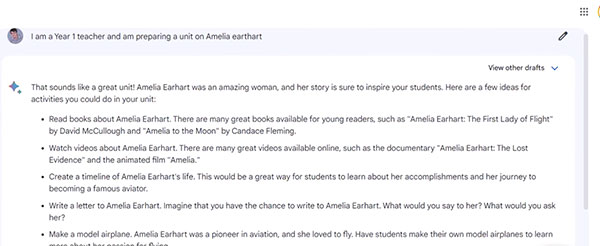In the fast-paced digital landscape of today, the realm of education is constantly evolving, propelled by groundbreaking technologies that promise to redefine the way we learn and teach. One such revolutionary force is Google Bard, an innovative AI tool that has recently emerged within the Google ecosystem.
For educators, this marks a significant leap into a future where artificial intelligence seamlessly integrates with the art of teaching. In this article, we will delve into the transformative potential of Google Bard, exploring its features, applications, and the profound impact it can have on the educational landscape.
Exploring the Potential of Google Bard
At its core, Google Bard is an advanced artificial intelligence system designed to assist educators in various aspects of their profession. From lesson planning to administrative tasks, Bard proves to be an invaluable ally. One of its standout features is its ability to generate responses based on natural language prompts. For instance, a teacher can input a query related to their curriculum, and Bard responds with relevant ideas and suggestions.
Empowering Educators: A Case Study
Imagine a Year One teacher preparing a unit on the pioneering aviator Amelia Earhart. Using Google Bard, the teacher inputs a prompt, and within seconds, Bard offers a plethora of resources, including books, videos, and innovative teaching ideas tailored for young learners. This instantaneous access to curated content not only saves time but also enhances the quality of teaching materials, ensuring a more engaging and informative classroom experience.
Furthermore, Google Bard proves to be a valuable tool for essential administrative tasks. Consider the scenario where a teacher needs to conduct a risk assessment for a class activity involving potentially hazardous elements, such as live animals. By utilizing Bard, the teacher can swiftly generate a comprehensive risk assessment, complete with hazard identification, likelihood, consequences, control measures, training requirements, and monitoring protocols. Bard’s ability to streamline such tasks not only ensures safety compliance but also liberates educators from the burden of time-consuming paperwork, allowing them to focus on their primary role: educating students.
Efficiency at Its Best: Streamlining Administrative Tasks
In addition to providing prompt-based responses, Google Bard excels in transforming data formats. For instance, a teacher might receive a textual risk assessment but require it in a table format. With Bard, this transition is seamless, saving precious hours that would otherwise be spent on manual data formatting. The convenience of this feature is unparalleled, making administrative chores significantly more manageable for educators.
Seamless Integration and Accessibility
Google Bard’s intuitive interface and seamless integration within the Google ecosystem make it accessible to educators worldwide. Its user-friendly design ensures that educators, regardless of their technical proficiency, can harness the power of AI to enhance their teaching methods. Moreover, the efficiency of Google Bard is further exemplified by its real-time activity tracking, allowing educators to monitor their interactions with the AI system. This feature fosters accountability and enables educators to refine their approaches based on the insights gleaned from their Bard activity.
Conclusion: A Bright Future for Education
As we stand at the intersection of education and technology, Google Bard emerges as a beacon of innovation, illuminating the path toward a future where AI augments the capabilities of educators, making learning more engaging, efficient, and tailored to individual needs. With its ability to inspire creativity, streamline administrative tasks, and enhance the overall teaching experience, Google Bard has the potential to revolutionize education as we know it. As more educators embrace this transformative tool, the classroom of the future is poised to be a space where curiosity knows no bounds, and learning is truly limitless.
